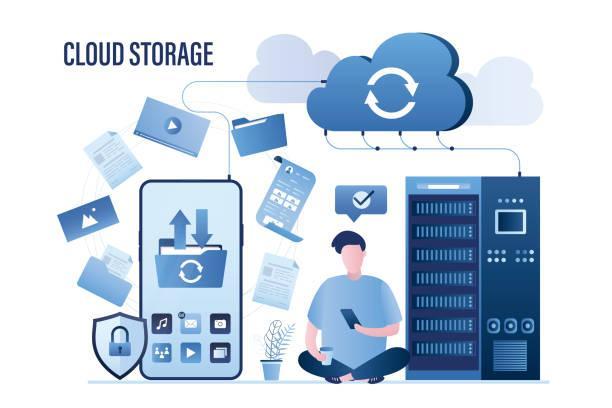Cloud computing, artificial intelligence, and big data have promoted cloud services and computing for every business. Businesses need cloud services for data storage, security optimization, data backup plans, and many more. In the future, companies are likely to demand more cloud services. Cloud services have pros and cons; one of the cons is high costs.
Cloud costs contribute to some of the highest expenses businesses incur; hence optimizing cloud costs should be one of the top priorities for every organization. Here are some tips for businesses to optimize their cloud costs.

1. Utilize The Right Cloud Cost Optimization Tools
There are different cost optimization tools that you can use for your organization to minimize your costs. Various cloud service providers have different cloud cost minimization tools.

AWS tools
You can use the AWS cost explorer if you are using Amazon Web Services. The tool lets you monitor your costs and usage and then analyze them to predict your monthly cloud tools. You can also use the AWS cost anomaly detection. This tool enables you to monitor the costs to avoid any surprises. Other AWS tools include the AWS Budgets and trusted advisors, guiding you through the best practices that allow you to monitor the cloud costs.
Optimizing Spend @Cloud
This is one of the most critical cloud optimization services and tools for SMEs to accelerate digital acceleration to cloud computing. Besides the transformations, it helps you monitor cloud services’ costs and increase business value, agility and performance. Cloud computing will help you achieve different benefits such as selecting the proper cloud sizing, best practices, maintaining compliance, and cloud spending optimization.
Azure tools
If you are using Azure cloud services, the tools include Azure cost management, which helps you to plan and control the spending cost analysis and budget implementation. It will also enable you to export cost management data. Azure aggregates the expenses and organizes them into different categories. It also lets you track your spending trends and break down service costs and the costs based on the time frame. You can use the Azure Advisor, a personalized recommendation to optimize your Azure products. You can also use the Azure cost anomaly detection.
Google cloud tools
You can use the cloud billing reports when using the Google cloud. This page monitors the Google Cloud usage costs. You can specify the time., project and services to monitor to determine the costs. Moreover, you can use it to assess monthly cost trends, project costs, historical trends, and costs for each resource. You can also use the CUD analysis reports.
2. Optimize The Cloud Storage And Performance
When running your own data center, storage expenses are among the highest. Storage is usually billed on its own and is one of the top costs companies incur. Therefore, you need to optimize the storage costs and pay attention to storage utilization. You can optimize the storage costs in various ways.

Store the necessary data
Instead of storing any data, you must ensure you utilize the space wisely by storing only the necessary data. First, you must clear junk frequently, unnecessary and old data. You also need to go through the data to eliminate redundant data that may occupy double space.
Only use what is needed.
When selecting the payment plan for your cloud storage, you need to choose the plan that charges for the space occupied. You do not need a plan that will offer you space to store the data. Such techniques may provide either less or more space. The best approach is paying for the space you utilize, and should you need extra space, pay only when necessary and needed.
Storage classes
Cloud storage varies based on the storage class. These classes include the standards, near line and cold line, and archival. Also, they have different advantages and varying costs. Ensure you use the right class for the proper storage. For instance, you should not use standard storage for archival data and purposes.
3. Tune Your Data Warehouse
You can use different strategies to tune your data warehouse; one of the most effective methods is using Big Queries, especially when doing data analytics. You can tune your data warehouse using these strategies;

Enforcing controls
These controls will limit query size to avoid long queries that can be expensive. The controls can help you limit the query size using the maximum bytes billed setting, which will make the query fail if you exceed the limits.
Use partitions and clusters
Partitioning and clustering your tables will enable you to reduce the costs of processing queries hence improving the processes. You can use different partition filters to create separate partitions to store specific data queries and jobs. Whenever you partition, the Big Query is likely to reduce the price of data stored by half.
4. Use Different Cost Metrics
There are different cost metrics you can use to analyze cloud costs. These cost metrics will enable you to focus on cloud costs and focus on the ways of reducing some of these costs. These metrics can also help you optimize the cloud costs by focusing on individual functions. Here are some costs
Unit costs
This is the cost for the API call and the cost per report. This enables you to understand how different factors affect your costs. It helps you decide how to spend your resources and understand your ROI on your cloud investments.
Idle costs
The idle costs are essential for measuring business efficiency. The idle costs will enable you to determine the right architecture, saving costs. It can also help you implement different process improvement and optimization strategies to eliminate unnecessary costs.
Other costs
Other costs include the shared infrastructure, which significantly eliminates costs and reduces engineering efficiencies. Other costs include load efficiency curve and innovation/cost ratio, which helps you determine the ratio of the expenses allocated to research and development, and production operating costs. Finally, you need to use these costs to select the right goals to boost the cost-saving strategies.
Conclusion
Optimizing the cloud costs can significantly boost business revenues and reduce expenses and business profitability. Therefore, the business can deploy different measures to optimize these costs. Some of the most effective measures are using different metrics to optimize the costs, using various tools to monitor the costs, reducing the sizes of the queries, and paying for the required storage space. You can also consider different storage classes to help you save the costs.
